The original Mini – the one that’s just about the size of a large Samsonite suitcase – had great motorsport pedigree because it was so much lighter and more maneuverable than anything else on wheels. So much so that Mini won the famed Monte Carlo Rally four times in the 60’s.
Now, if you’re a regular reader of autoX, you may recall that we’ve been over some of this already. You see, last year we did a very interesting test with both the Cooper S and the Countryman. Since the Cooper S is referred to as a go-kart with a roof on, we decided to race it against a 125cc racing go-kart. And since the Countryman was the basis for Mini’s reentry into the World Rally Championship, we raced it against a rally Gypsy. And while the Countryman may not be run by the factory in world rallying anymore, it just won the iconic Dakar rally at the hands of multiple champion, Stephane Peterhansel.
In both our tests, however, the dedicated racing machines won – but by a much smaller margin that we expected. In fact, the two Mini’s well and truly earned their racing stripes and proved themselves worthy of their famed legacy.
Over a one kilometer dirt track, the rally Gypsy was a mere 1.6 seconds faster than the Countryman – and that was a front-wheel drive Mini. The one we have here is the recently introduced four-wheel drive version. Of course, the Mini (with a 1.6 litre twin-scroll turbo four-cylinder petrol engine that produces 184bhp) is considerably more powerful than a Gypsy (even a rally prepped one), but it lost out because the track was rutted in places. And the Mini doesn’t like ruts at all. In fact, it has a decidedly antagonistic relationship with any-and-all road imperfections. At times, the ride feels even stiffer than the Cooper S to compensate for its higher center of gravity. As a result, on occasion, the steering tries to violently free itself from your grip if you happen to drive over terrain it doesn’t approve of.
Luckily, then, the BIC has a track surface that’s as blemish free as Gwyneth Paltrow’s skin. But, there was one problem. It was raining. No, it was pouring – and it had been doing so since the previous night. Well, at least the Mini’s four-wheel drive system would come to good use then! This is the first Mini ever to have all-wheel drive. In fact, this is the first Mini to have four doors, let alone four powered wheels.
I saw the first concept version of this car at the Paris Motor Show in 2008, and the first thing that struck me was that – well, this not particularly ‘Mini’ at all! But, I suppose that was the point. After all, Mini is trying to create vehicles that retain the qualities (and edginess) of the Cooper, while being larger and more practical at the same time. So, the Countryman has a full sized bench at the back – so much so that your rear seat passengers wouldn’t dream of striking you off their Christmas card list.
Never mind the seats though, or the brilliantly funky interior, the objective of this test is to see if the Countryman can match the time set by the Cooper S a few months previously – and, more importantly, plaster a grin as wide when attacking corners. Last year, the Cooper S lapped the BIC in a time of 2:39.8. And, even though the track has rubbered up since then, and thereby gained grip, it would be a tough ask (to say the least) in the wet for the Countryman – four-wheel drive or not.
The Countryman manages to achieve 100km/h in 7.9 seconds, versus 7.2 for the Cooper S – which is not bad considering that it is considerably larger. But, what the front wheel drive Cooper really struggled with was wheelspin coming out of corners. The Countryman, on the other hand, should be able to use its all-wheel drive to its advantage. The question is – will it dart into corners with the same ferocity, which is to say in a manner that’s akin to a pit bull terrier chasing a stick?
Now, clearly that’s hard to do when there’s a film of water between you and the tarmac below. But that didn’t particularly faze this Mini. The 225/45 R18 tyres may not help the ride, but they do certainly enable the Countryman to snatch a pretty firm hold on the track surface – even in the rain.
The key in the wet is to be as smooth as possible. And, despite that, there was a bit of understeer, but nothing that couldn’t be controlled by a tap of the left foot on the brakes. The steering is just as communicative as its smaller sibling, and the power just as immediate. The four-wheel drive was put to good use when powering out of corners, as a result of which the Countryman instilled a lot of confidence on this dreary evening. And, pretty soon, it seemed as though we might actually get quite close to the target – which, low and behold, we did. We ended up with a 2:42.2, which is just a couple of seconds off the Cooper S in the dry – and that’s pretty spectacular if you ask me. That said, and while the Countryman is fun to drive, I would still have the Cooper S any day of the week. The intimacy and involvement provided by it is missing is pretty much any other machine on four wheels this side of a proper sports car.
But that crucial Mini character is very much retained in the Countryman. And while there’s no denying that it is very expensive, it is at least reasonably practical. Plus, it also has the effect of converting its occupants into mini celebrities, courtesy of its novelty value on the road. And fame extracts a price – that’s just the way of the world!
- Mini Cooper S Countryman
Engine: 1,598cc / 4 cylinders / 16 valves /twin-scroll turbo
Fuel: Petrol
Transmission: 6-speed automatic / Fourwheel drive
Power: 184bhp @ 5500rpm
Torque: 240Nm @ 1600-5000rpm
Acceleration: 0-100km/h – 7.9 seconds
Price: Rs.37.5 lakhs (ex-showroom, Delhi)
Surprising Discovery
The two champions of our mega sedan test from last year locked horns again – this time at the track, and the unexpected happened. All the while, the crowd favourite was watching merrily – and beaming!
It was a win for two completely contrasting cars when we conducted our mega sedan test last year. The Chevrolet Cruze, everyone agrees in the office, is a sensational mechanical product and is perhaps one of the most exciting reasonably priced cars you can buy, while our other winner in a segment below – the Hyundai Verna – creams the competition at being an extremely good value-for-money proposition, as it offers a huge equipment list. When we conducted this test last year, we were very proud of ourselves at providing proper consumer advice – rather than telling you about lurid power slides – so it was only a matter of time before we got back on form.
Naturally, as you’d imagine, we decided to take the two winners of our mega test and show them the entry gate of the BIC. These cars are champions of the daily routine – but, this time around, we’d be lapping them on a full-blown international racetrack to see how closely matched they are on pure performance. But, both the Cruze and the Verna that rule the road are diesel motors and we’re die-hard petrol devotees. So, there had to be something that didn’t run on the fuel of Satan and was accomplished enough to rival both the diesel cars here.
The Hyundai Elantra is just such a tool. We like it – it looks impressive, has linear power delivery, and a composed chassis. Not that we didn’t consider other options – the Jetta 1.4 petrol was voted against because of its relatively relaxed performance, and the Civic and Corolla Altis aren’t quite as enthusiastic when it came to going around corners. So, time to thumb that starter button and give it the beans!
As you floor the accelerator with all the eagerness you can muster while exiting the pit lane, you expect a burst of power to pin you back in the seat – with the speedo gaining substantial momentum towards the right side of dial. But the Elantra prefers to be unhurried. It’s not what you’d call slow – it actually has quite impressive throttle response, but it isn’t a 10-second quarter-mile car either. The peak torque of 177Nm comes in at a middling 4700rpm, and is spread quite well from lower down the rev range. The gear ratios are really well spaced, and, knowing that the natural habitat of the Elantra are urban city roads, it didn’t feel unbefitting of a track.
The grip – both mechanical and from the tyres – was the most surprising element and that helped it go pretty well, even around the most technical bits of the BIC. The steering isn’t what you’d call spectacular though. It is accurate and fairly precise, but it does have an element of vagueness about it. Still, it wasn’t as bad as the Verna’s! But it’s the balanced chassis and brakes that really make the difference on the track. The Elantra turns in happily and sticks to the line you want to take – and knowing the history of Hyundai cars and their aversion to corners, the Elantra comes in as a bit of a shock really! The only disappointment came from the engine, which seemed to have a slight flat spot at about 4200rpm – a little bit before peak torque is achieved. Apart from that, the Elantra was well worth the time on the track, and posted a time faster – on a stupidly wet track, mind you – than what the Jetta 2.0 litre diesel did in completely dry conditions.
So, the benchmark was set, and the Elantra did a good job of it too, we all agreed. The obvious thing to do now was to get behind the wheel of the one car that everyone in the office loves – the Cruze – and give it the right sort of treatment. But, immediately, there was a problem. GM didn’t have a manual available at the time, and asked if they could send over the 6-speed automatic variant to us. There was no choice, so we had to go in with it. But, in hindsight, that was a mistake!
First things first – the Cruze that won our sedan battle had a different engine and transmission combo. At the time, it had a 2.0 litre engine that produced 148bhp and 327Nm, as against the 163bhp and 380Nm that you get from the new one. The newer engine features a chain-driven double overhead camshaft layout and an electronically controlled variable-geometry turbocharger. The engine operates at an impressive 16.3:1 compression.
Of course, you’ll say that more bhp is better, but somehow in the Cruze it doesn’t quite feel so. That zest of the earlier engine – that punchiness – is completely gone and the power delivery is much tamer now. In fact, in outright race to hundred, the more powerful version would lose to the 148bhp motor. Yes, it sure is better in roll-on figures and refinement, but we’re on a track and that begs the engine to pull eagerly – which it doesn’t. Let’s not forget, though, that this particular car was handicapped by its automatic transmission, which may be great for the daily grind but isn’t ideally suited to the track. So, suddenly, the one truly sporty, yet usable, sedan that we had under the 20-lakh bracket has also given in to the duties of city life and become just like any other car. At least with the auto box, it’s lost its charm and aggressive personality – two things that made it special in our previous shootout.
But, we must go on – and so I should tell you that the steering felt surprisingly disappointing for a Cruze. That mechanical feel of the older unit was gone, and, at least in the wet, the steering didn’t seem to weigh up as beautifully now. This is reason alone for going vaguely around corners and missing apexes a bit too often. The grip is about average, and the gearbox is tremendously lazy and never seems to find the right gear – all of which meant that the Cruze lost its dynamic composure on track.
So, the Cruze just isn’t the same playful friend anymore. It floundered so much that we were truly sad. It seems that we’ve lost another truly great champion to the lure of doing things by the book. The problem here is, though, that there are better products at doing things by the book. So GM should have left the naughtiness of the car intact – that’s what made it unique.
Now to the Verna, which, thankfully, is the same silly car – no changes whatsoever, and we still love it. We knew it was stupid at changing direction and always gives you a minor heart-attack when you choose to go around a corner with any sense of speed. On the track, the Verna is a cartoon character that thinks its cast in a comedy show – and so it behaves comically all the time. The steering communicates absolutely nothing to the driver, and the chassis just about warns you when its about to rotate a full 180-degrees. Plus, the body roll is hilarious, and all this coupled to the mountain of torque and huge power rush makes for a recipe of disaster you’d think. But not so, we had the most fun in the Verna, despite it going sideways almost all the time (or was it because of that?). At speed, the Verna keeps you guessing even on a properly dry road, so imagine the kind of slip angles we were getting on the flooded BIC.
The lovely power delivery and the sheer figures of this gem of a diesel engine are the sole reasons why you gain so much pace quite so rapidly. You better be awake then, because it takes all your faculties to go hard on the brakes in the wet and get the car turned into a corner. Being smooth is the key to digging out a good lap time, but with the Verna you’d have to be in your 80’s to keep it in shape. So, the Verna loses points in terms of dynamic capability, but it makes up for it in the entertainment department. I’ve never had such a hair-raising experience, which was also colossal fun.
Hyundai Elantra
Engine: 1,797cc / 4 cylinders / 16 valves / DOHC
Fuel: Petrol
Transmission: 6-Sp eed manual / Front-wheel Drive
Power: 148bhp @ 6500rpm
Torque: 176Nm @ 4700rpm
Chevrolet Cruze
Engine: 1,998cc / 4 cylinders / 16 valves / DOHC / turbocharged / Common rail direct injection
Fuel: Diesel
Transmission: 6-Sp eed automatic / Front-wheel drive
Power: 163bhp @ 3800rpm
Torque: 380Nm @ 2000rpm
Hyundai Verna
Engine: 1582cc / 4 cylinders / 16 valves / DOHC / turbocharged / Common rail direct injection
Fuel: Diesel
Transmission: 6-Sp eed manual / Front-wheel drive
Power: 126bhp @ 4000rpm
Torque: 260Nm @ 1900-2750rpm



















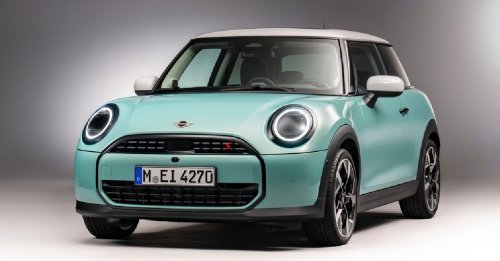
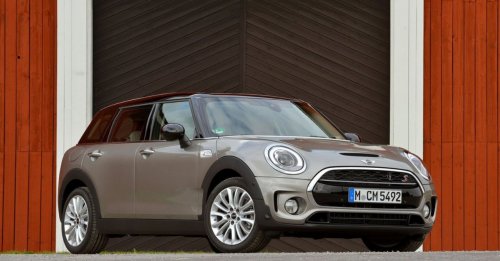
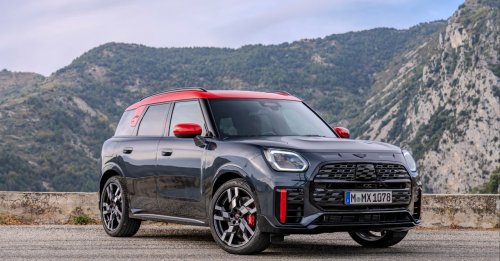
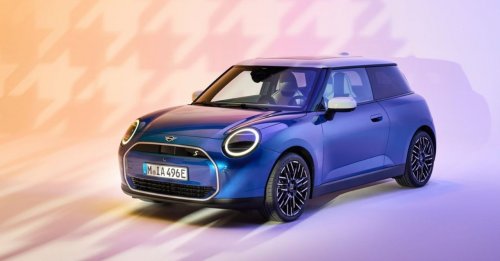

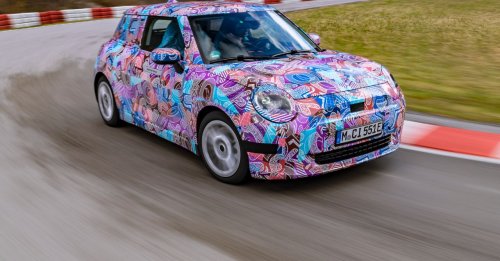














Write your Comment